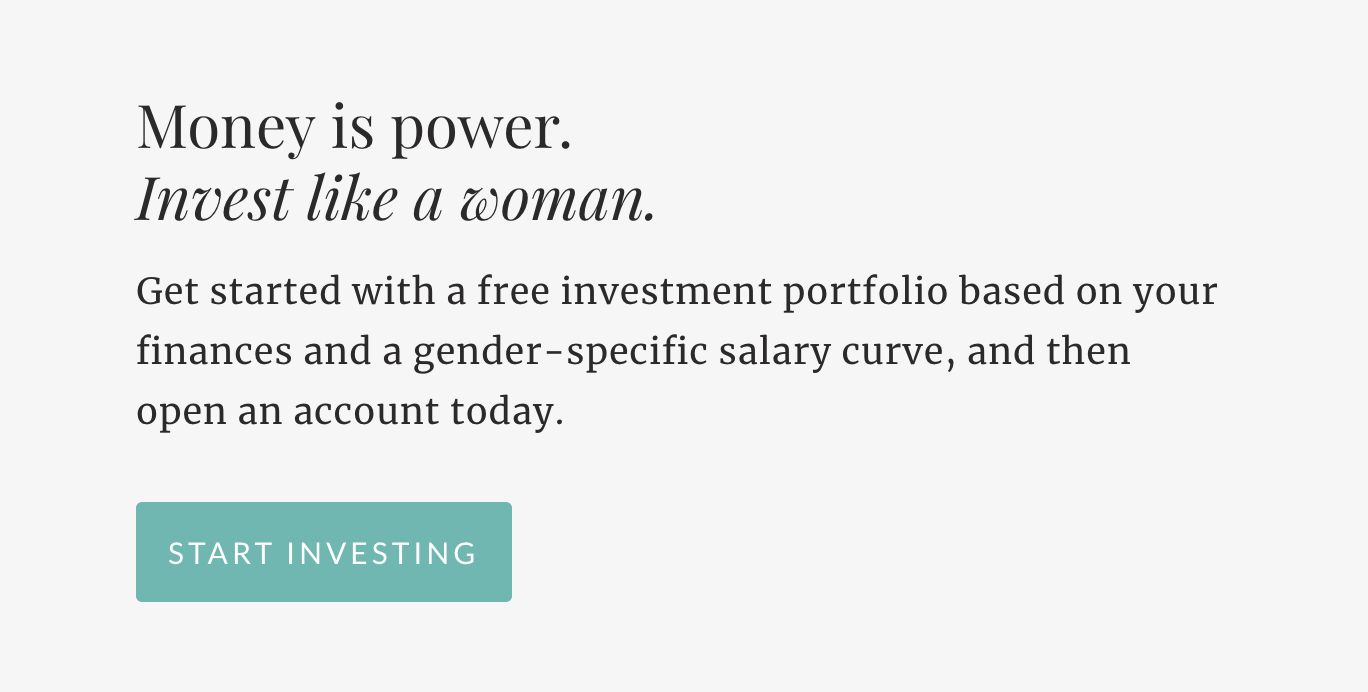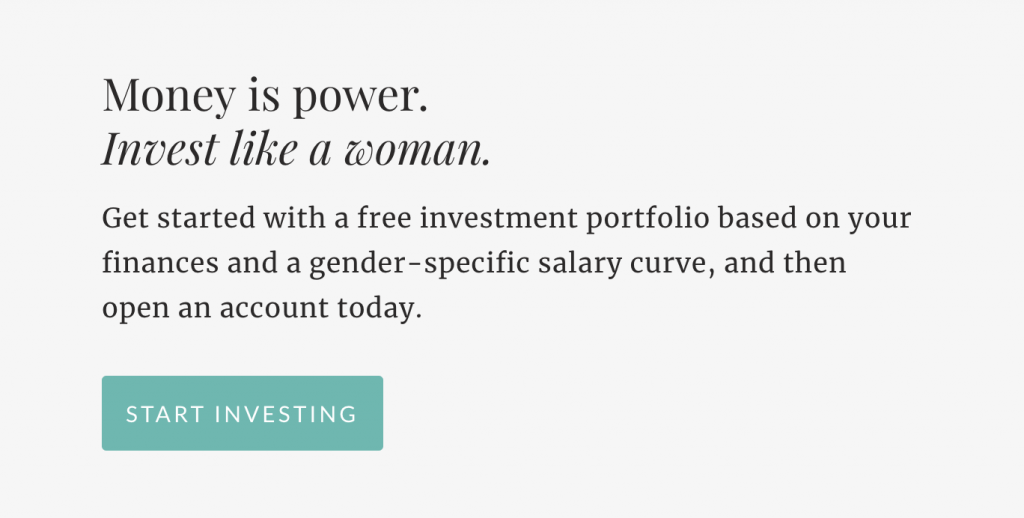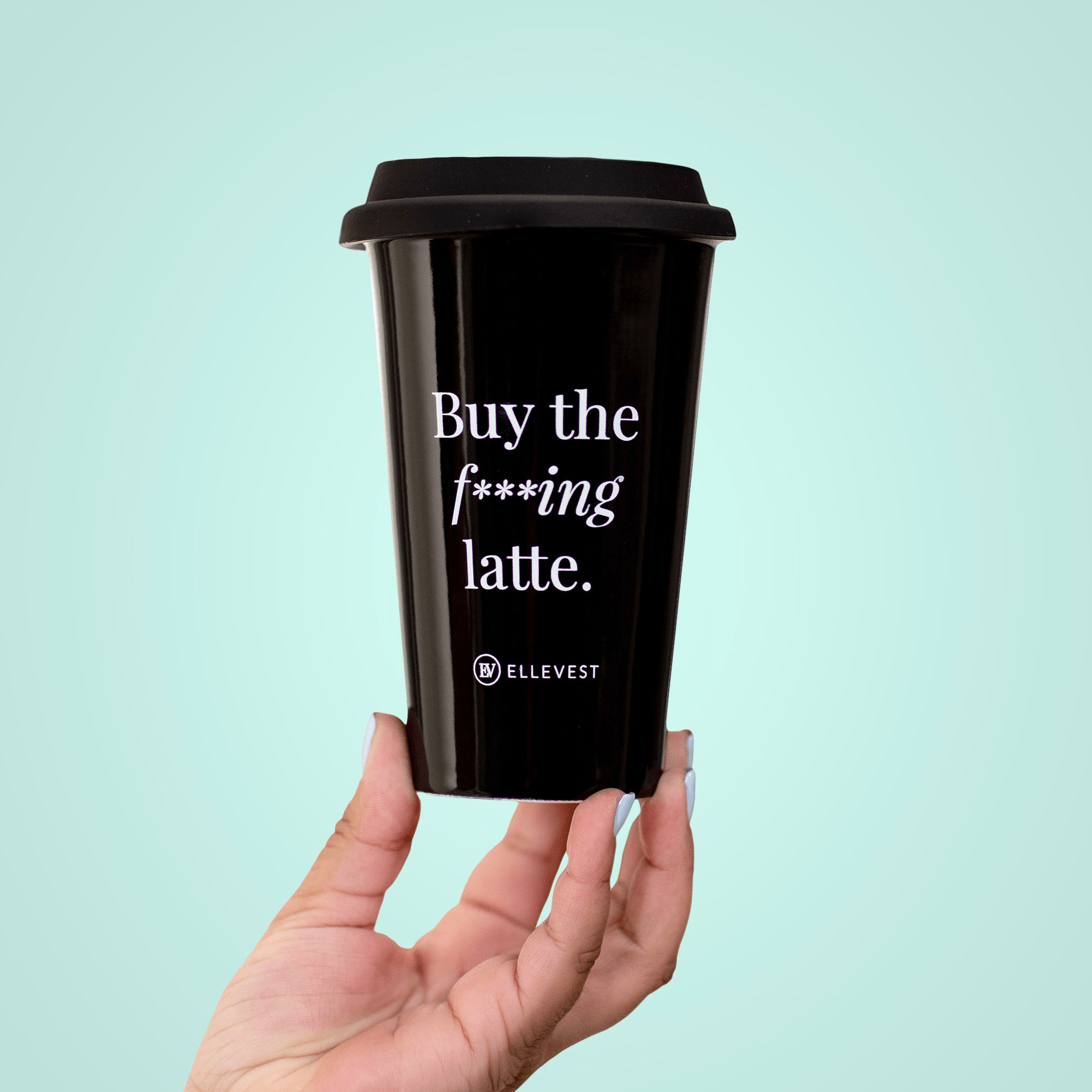Once you’ve decided whether to pay off student debt or invest, what’s the best way to do it? Here’s Ellevest Chief Product Officer Alex Stried’s advice.


Once you’ve decided whether to pay off student debt or invest, what’s the best way to do it? Here’s Ellevest Chief Product Officer Alex Stried’s advice.

I’ve always wanted to have a personal stylist. It would be so much more convenient to have someone give me things to wear instead of mindlessly staring at my wardrobe for at least thirty minutes, wondering what to wear. It would solve all my sorrows of ‘never having anything to wear’. That said, I don’t think I’ll ever bother to hire a personal stylist because there’s something even better: Haverdash.
Haverdash is a clothing rental subscription service that gives you unlimited (yes, unlimited) access to the latest looks for one flat fee of $59 a month. When I heard about Haverdash, the first thing that came to mind was how much money I could save without compromising my style. The idea of being able to curate outfits to keep me prepared for any occasion for only $59 a month seemed almost too good to be true. But it is, and I’m urging everyone to become a Haverdash member.
Getting started is easy. First, you’ll want to set up an account by using your email address and creating a password. Then, browse through Haverdash’s fashion-forward collection to pick the looks you love. Once you’ve had a scan, add three styles to your basket to be delivered straight to your door. You can wear the items as often as you want before returning them in a pre-paid bag. Haverdash will take care of the dry-cleaning. Free shipping and exchanges mean that you can order as many clothes as you want, and you can even purchase your favorites at a discounted price.
As a self-proclaimed fashion junkie, I was keen to try service myself. Keep reading to discover the wardrobe staples from Haverdash that I’ve added to my basket.
I’ve come to realise that midi dresses are among the most versatile pieces you can wear all -year-round. They can be dressed down with some cowboy boots or dressed up with a pair of stilettos. They’re appropriate for many occasions, whether that’s work or drinks after work. For that reason, midi dresses will always be an asset for my closet.
Like midi dresses, jumpsuits instantly convey effortless elegance. They’re incredibly easy to style and can be worn in so many different ways. When I choose to wear one, I usually throw on a leather jacket and a pair of chucks.
Anyone who knows me knows that I love a good sweater or sweatshirt — the more oversized, the better. In my eyes, sweaters are an essential, cozy basic that goes with virtually anything, whether that’s with jeans, leggings, skirts, or over a dress.

You know those weeks when it feels like you’re just spending money every single day? We hear you — it’s kind of like that happy hour you so badly want to attend after work.
You got out early. You had a tough day and you just want to see your girls. But giving up that happy hour drink and appetizer ($15 per night out x 10 workdays a month = $150) can make a big difference at the end of the month.
Don’t get me wrong, payday is amazing. But what you do with the money you make is really what’s key.
We’re all managing multiple financial goals throughout our lives, so how can we save and invest, and still enjoy the life we’re living now? One of the easiest, most effective ways to organize your finances is by using the “50/30/20 rule” for spending and saving. Senator Elizabeth Warren created the 50/30/20/rule for spending and saving when co-authoring a personal finance book with her daughter, Amelia Warren Tyagi: All Your Worth: The Ultimate Lifetime Money Plan.
The rule is a simple, accessible way to understanding how to best spend and save your money.
By organizing your expenses into three main spending categories, the 50/30/20 rule can help you budget, while helping you get closer to reaching your financial goals.
Keep reading to learn the simple four step guide you need to start using the 50/20/rule in your own life.
You’re going to make it a habit to budget a little each month, but how much exactly? “The best way is to take out your monthly bank statements and divide your after-tax income among needs, wants, savings and debt repayment,” says Sallie Krawcheck, CEO, and co-founder of Ellevest, a digital financial advisory for women. Your after-tax income is what remains of your paycheck after taxes are taken out, for example, local tax, state tax, income tax, Medicare, and Social Security.
If you have a steady paycheck, your after-tax income should be easy to find out. Simply, look at your paystubs. And if retirement contributions, or any other deductions are taken out of your paycheck, add them back in.
If you’re self-employed, your after-tax income equals your gross income less your business expenses, for example the cost of your laptop or office supplies or airfare, as well as the amount you set aside for taxes. If you’re self-employed, you’re responsible for remitting your own quarterly estimated tax payments to the government because you don’t have an employer to take care of it for you.
In a planning mood? See how an investment plan could help you manage your finances. Ellevest is one way to do it. You can get a personalized portfolio in under 10 min. And it’s made by women, for women.
⇒ Get Started Investing With Ellevest
Congratulations! Now that you’ve figured out your monthly after-tax income, think about your monthly financial responsibilities. How much do you spend on “needs” each month, such as like groceries, housing, utilities, health insurance, car payment, and car insurance? According to Warren and Tyagi and their 50/30/20 rule, the amount that you spend on these things should be at 50 percent of your after-tax income.
Of course, it’s not easy to know what true “needs”are. Basically, think of this as thing you can’t live without. For instance, if you don’t pay your car you’ll probably run into troubles, so that would be considered a need. You also need to pay rent, eat, and you probably can’t live electricity. In other words, any payment that you can’t forgo paying can be considered a “need,” according to the Warren and Tyagi.
Easier said than done, but you can do it. Can you put 30 percent of your money toward your wants? This is everything you buy that you want but don’t necessarily need think new rooftop cocktails, Netflix accounts, a trip to Tulum, salon haircuts, and sushi restaurants.
Wants are the basic niceties of life that you enjoy. You may be spending more on “wants” than you think. For example, if it’s summer, you may need a bathing suit, but you don’t need a department store bathing suit, if you can get one at a discount stores. Thinking about what your needs are is a great opportunity to reflect on the expenses in your life. This way, you’ll know what you’re spending on versus what you should actually be spending.
Yes, the rules are tricky to master for your own life, but if you think about it, they make sense. Bottom line: It can be fun spending money. It can be even more fun watching your savings grow.

Ellevest is an easy online investing tool using algorithms tailored to your salary, gender, and lifespan (aka your real life).
⇒ Get Started Investing With Ellevest
Almost there… so now you’ve accounted for the first 80% of your income — with 50% going to needs and 30% to wants. What’s left is 20%. This last portion should be set aside for savings, additional debt repayments, and investing, depending on your circumstances.
First, focus on saving money in an emergency fund, then put money towards your retirement and paying down debt (including student loans, balance transfers, or car loans). Do you have all of those things under control? Now, you can start saving this money toward other future goals like starting a business, buying a home, or just investing in Future You!
While 20% may seem small compared to the others, if you’re using it wisely, then this amount can add up quickly thanks to the power of compounding returns on your investments.
Our friends at Ellevest know a lot about how to handle that cash money. Their digital service uses an algorithm specifically designed for women’s incomes and life cycles to figure out the best investing strategy for you.
The platform is well-designed, easy-to-use, and speaks to our unique financial needs — whether that be planning for retirement, that Aussie vacation, or starting a family. The best part? The advisors at Ellevest are incredibly knowledgeable and will help you every step of the way. Another big bonus? Ellevest has no minimum so you can start with as little as $5 today. Plus Style Salute readers get a little something extra to start you off. Learn more here.
⇒ Get Started Investing With Ellevest
Let’s say your total take-home pay each month is $3,000. Using the 50-30-20 rule, you have a $1,500 limit to spend on your needs per month. This means your rent needs to be well under $1200. This is unless your car payment, utilities, credit card payments, insurance premiums, and other necessities of life don’t exceed $300 a month.
If you’re in a situation where you pay more for rent (own your home or locked into a lease), what you can do to change that? Relocating is one option. You can also take another look at your “needs” to see if there’s a way that you can reduce anything these. Maybe shop for more affordable car insurance or transfer the balance on that credit card to one with a lower interest rate so your minimum payment drops.
Ultimately, you goal is to be able to fit all these expenses into 50 percent of your take-home after-tax income.
You can spend $900 a month on your “wants” based on that $3,000. If you’re over budget here, take a step back and look at your life, look at your choices. Stop to think about the recurring costs that and whether there are cheaper alternatives that could work for you. Anything from your car payment, housing situation, and making coffee instead of buying it. By changing up your daily habits, you could save hundreds of dollars a month. That’s a fact.
Remember, you still need 20 percent left over so you can save. pay down your debts, and invest towards Future You. Now you have $600 left, that last 20 percent. You know what to do with it. Pay down on debt, save for an emergency, and plan for your future.
Automation is the easiest way to save. When you choose to invest — whether it’s a dollar amount or a percentage of your pay — the money goes into your account before it’s taxed and before you even get a chance to think about spending it. You can replicate that process for an IRA or other investment account by setting up automatic monthly payments through your bank. Doing this removes the temptation of spending instead of saving.
So yeah, retirement may seem a far way off — but there was a time when the age you are now was also unthinkable.
⇒ Get Started Investing With Ellevest
Don’t sound the alarm – yet. You can set one up with no minimum balance here.*
Answered: 401(k) vs. IRA? Use Both If You Can
The One Money-Habit All Wildly Successful Women Share
How to Increase Your Chances of a Long, Healthy (and Wealthy!) Life
Disclosures: We’re excited to be working with Ellevest to start this conversation about women and money. We receive compensation if you become an Ellevest client.

I recently did a thing. I took a leap of faith and left a comfortable corporate career to start my own business. After 10 years of working in HR at tech companies in Los Angeles, I decided to venture out and work directly with smaller, emerging companies to help them figure out their people strategies. I’m a few months in and have a growing list of clients and pretty steady income. Does it sound like I’m living that ‘Girl Boss’ dream? I am! Sort of.
The entrepreneur life offers so many benefits like defining my own schedule and working on projects I am passionate about. At the same, time it also comes with a lot of uncertainty, especially around finances.
Taking this story all the way back to when I received my first official ‘big girl’ job, I had my dad take a look at my offer letter. I was thrilled the company wanted to pay me anything. It was 2009 and not many people my age had jobs. My dad pointed out, as dads do, that they also offered a great benefits package and a matching 401(k). I knew benefits were important because I had been charged over $200 after a trip urgent care for strep throat without coverage but I had no idea what a 401(k) was. My dad tried to talk me through compounding interest and tax shelters but he may as well have been speaking Japanese. I didn’t care, I was employed!
In an effort to end the lecture and to continue my employment celebration at happy hour, I agreed to sign up for whatever a 401(k) was to make my dad happy.
I should reiterate how poor I was during this phase of my life. I had graduated 6 months earlier after the market had crashed. All of the money I had saved from my job in college was depleted and oatmeal from my company’s kitchen was my breakfast, lunch and sometimes dinner. Now, because I promised my dad, I was supposed to just give away a very much needed portion of my paycheck every month? I hated it and after seeing my first post-tax paycheck, I dropped my contribution down to the minimum amount.
Then a funny thing happened, I started receiving emails from my 401(k) provider that shared my savings balance. The balance was higher than the minuscule amount I had been putting away thanks to my company’s match and the recovering economy. It finally clicked, a 401(k) was basically like getting free money.
You put in a little, you get much more back. I was hooked and started increasing my contributions little by little over the years until I was able to get to the max amount. My work in HR allowed me the opportunity to manage my company’s 401(k) program, and I became a walking billboard on the importance of a 401(k), especially starting early in your career. Dad was so proud.
I now very much care about compounding interests and tax shelters. That said, being my own boss is amazing, but it also means I no longer have access to a company 401(k) or savings plan (aka no more free money) and I’m not the only one in this position. Self-employment is on the rise and it is estimated that by 2020 almost 42 million Americans will be working independently. I figured there have to be savings options for people like me, who work in nontraditional jobs. Turns out, there are many!
Here are a few plans that I learned about. If you are a newly minted entrepreneur or your company doesn’t offer a 401(k), check them out.
So you’ve decided to look into an IRA. Should you use a traditional or a Roth IRA? (What about using both?) Here’s what you need to know about …
A Traditional or Roth IRA are both great options for those just starting to invest in their savings or for someone saving less than $6,000 a year. If you are leaving your job that offered a 401(k), you can roll over your savings into this account. If you are 50 years or older, IRA’s offer a “catch up” that allows you to contribute $7,000 a year. There are tax deductions available for a traditional IRA but no immediate tax deductions on Roth IRA’s. After retirement, withdrawals are tax-free. The Roth IRA does have an income limit, of $137,000 for 2019.
If you’re looking for straightforward guidance on which type of account to use, I have good news: In less than 10 minutes, you can create a retirement account with Ellevest. They’ll use the info you give them about your income to see if you’re eligible for a Roth. Then, they estimate your retirement forecast with a Roth IRA versus a traditional IRA and then recommend the account type with the higher forecast. (They use the tax brackets that exist today, but there’s always a chance the laws could change.)
If you’re looking for straightforward guidance on which type of account to use, I have good news: In less than 10 minutes, you can create a retirement account with Ellevest. They’ll use the info you give them about your income to see if you’re eligible for a Roth. Then, they estimate your retirement forecast with a Roth IRA versus a traditional IRA and then recommend the account type with the higher forecast. (They use the tax brackets that exist today, but there’s always a chance the laws could change.)
⇒ Start Planning for a Retirement You’ll Love With Ellevest
Also called the one-participant 401(k) or Individual 401(k), a solo 401(k) is the same as a traditional 401(k) offered by an employer to its employees. Translation: You can contribute to your plan as both the employer and employee.
Your contributions are pre-tax, so you’ll end up paying taxes when you withdraw your money later. As an employee, you can contribute a maximum of $19,000 annually ($25,000 if you’re 50 or older). As an employer, you can throw in 25% of your business’ earnings, though you’ll have to do some math to figure out your deduction limit.
In a planning mood? See how a retirement plan could help you manage your future. Ellevest is one way to do it. You can get a personalized portfolio in under 10 min. And it’s made by women, for women.
⇒ Start Planning for a Retirement You’ll Love With Ellevest
If you operate as a team of one or boss of me, there’s a super special type of retirement account you should know about. It’s called a SEP IRA. Short for Simplified Employee Pension IRA, a SEP IRA works in a similar way to a traditional IRA. It’s a tax-deferred account, so any investment earnings grow tax-free until you withdraw your money, and your contributions are tax-deductible.
So, what is it exactly?
411 on SEP IRAs
With a SEP IRA, you can contribute 25% of your earnings, up to a maximum of $56,000 annually for the 2019 tax year. Compare that to the annual $6,000 contribution limit on traditional IRAs, and it’s crystal-clear why SEP IRAs are kind of a big deal. Even 401(k)s can’t touch SEP IRAs here — they have a $19,000 contribution limit (not including employer contributions).
And let’s say freelancing is treating you well (extremely well, really) and you want to max out your SEP IRA this year. Here’s what the math looks like: Divide $56,000 by 12, and you get $4,667.
Bonus: You can contribute to a SEP IRA while still contributing the annual maximum to a or an employer-sponsored plan through a second job. If you want to open a traditional or Roth IRA in addition to your SEP IRA, you can do that too.
Leaving the stability of the corporate world can be scary but savings doesn’t have to be. There are plenty of options available to help you save for your future, regardless of your employment situation.
Ready to attack this retirement thing and check it off the”to-do” list? Get started today. Ellevest creates personalized investment portfolios in under 10 minutes based on your finances and a gender-specific salary curve.
⇒ Create a SEP IRA With Ellevest today.
It can be financially hard — ok, completely terrifying — to quit your job and reliable paycheck to start your own thing. This is where your emergency fund comes in handy because it can make the occasional lag time between projects less nerve-racking. And I can’t stress this enough: By factoring retirement savings into your rate, you’ll make it easier to save because you’ve already earmarked some money for your retirement account(s).
Nervous about keeping yourself on track with your retirement savings or think it sounds too involved, set up automatic deposits for your retirement account(s). At Ellevest, you can set up bi-monthly, monthly, and quarterly deposits to your IRA, making it easy to build up your retirement savings without even thinking about it.
But what if your income is really variable? Doesn’t that make planning for the future difficult?
Maybe, yes. But, when it comes to retirement, every little bit counts…especially the sooner you start. You can thank compounding — which gives you the opportunity to earn returns on your contributions, and even more returns on those returns — for that.
So rather than focusing on a specific dollar amount, perhaps shoot for a fixed percentage of each paycheck. It’s less stressful than trying to stretch a smaller paycheck. Plus, you’re still getting into the habit of saving regularly for retirement.
Generally, it’s recommended putting 20% of your income toward investing for long-term goals, including retirement; but if 10%, or even 5%, is what’s realistic right now, stick with that and work your way up as your rate rises.
The right time to take your money out of the bank and invest is almost always “now,” so that the power of compounding can begin to work its “magic.”
Whichever account type (or types) you decide to go with, one thing is for sure: When it comes to investing for retirement, the most important thing is that you do it — often and regularly.
Because let’s be honest here: You like working for yourself. I know I like working for myself. That’s why I took the plunge by launching my own thing.
But I know I shouldn’t forget that I’m working for Retired Me too. If you don’t do the same, you may have to work longer than you want, instead of spending your retirement years poolside with whatever cocktail (or mocktail, if that’s what you prefer).
HoneyBook is here to help you get your plan off the ground. Get into it here.*

Learn why Kabbage is the simplest and fastest way to get up to $250000 for your business.
Here are more career and money topics for you…
Answered: 401(k) vs. IRA? Use Both If You Can

While success comes in many different respects, be it a career, personal or social, there’s one common denominator among successful women — and that is they all have good financial habits that keep them on track achieving their goals. After all, what helps us get what we want, be it a dream vacation, home, or business? Yep, you guessed it: money.
Whether you’re in the early stages of your career or have been saving up for a while, it’s never too late to get into financial control. After all, research from Ellevest, a digital investing platform made with women in mind, shows that money is the #1 confidence booster for women — and who doesn’t want a constant confidence boost?
Get the life you want by establishing these five financial habits.
Before we talk about how you can establish good financial habits, we have to talk about getting rid of that “bad debt.”
Being debt-free before you start pursuing your other financial goals is like starting off with a clean slate. Credit card debt and student loans are things we’d prefer to put off paying towards because it’s really not an easy thing to do, but it’s the first major step in taking control of your financial future. We all have to start somewhere. A good way to do this is to at least establish a steady income so that you can pay off your debts and have a little spare change to treat yourself here and there too. Make sure you’re aren’t selling yourself short at work, and that your employer isn’t selling you short either. Negotiate for that raise (more on how to that here) or compensation package that you deserve and that will get you closer to your goals.
Paying off your bad debts can be an intimidating prospect we get it. But the truth is you shouldn’t be afraid to ask for help, and not just because nerves might interfere with you, — but also because data proves that you’re likely to accomplish getting rid of that debt if you write it down. Now to the good debt. Good debt like student debt does not necessarily need to be paid right away, in part because investing your money in a diversified, low-cost investment portfolio is likely to earn you a greater return than the interest on that debt will cost you over time. Still, you should check periodically for ways to lower your student payments. For example, if you have student loans, putting them on autopay, which can help you save 0.25% from most lenders (a fun little tip we learned). And look at sites like Lendkey to refinance.
So, in review: Consider keeping “good debt” (like student loans) that costs you less than 4% a year outstanding and investing your money in a diversified portfolio instead.

Try it now: New to investing? This can help. You can speak with an expert financial advisor at Ellevest on topics ranging from how to get rid of debt to tips to investing.
Sallie Krawcheck, Ellevest’s CEO, says, “Investing regularly is how you can become an experienced investor (and improve your chances of reaching your goals).”
Women aren’t missing out on big returns because they’re making risky investments. In fact, women are missing out because they aren’t even investing at all. Studies show that women are better investors than men, so why leave it to them to do the investing for us? By not investing your money and just stashing it in savings, you’re actually missing out on making an additional $100 every single day. Don’t wait on taking the leap! If you need a little help divvying up your paycheck, follow this rule: set aside 50 percent for needs, 30 percent for wants, and 20 percent to invest towards your biggest goals, be it a house or a dream vacation.
Krawcheck also notes that women outlive men and our salaries grow at different rates then men’s do. An Ellevest portfolio takes all of this into consideration to fit your financial needs best.

Try it now: Have questions about investing? Get a personalized financial plan in just 15 minutes and have expert advice at your fingertips.
Life happens — and you never know just when a natural disaster will strike, your car will break down, or if going that extra mile at spin class will turn into a visit to the emergency room. Your money is your power, and having money stashed away for those less-than-desirable moments in life will help you breathe easy during difficult times. Set aside whatever you can towards your emergency fund while also building your wealth by investing.
Try it: Open up an account with Ellevest and get enjoy 0% investment fees on your emergency fund.
Even a go-getter like you doesn’t have all of the answers all of the time. That’s totally okay — after all, every successful woman has an entourage. Having a reliable financial advisor can help you navigate through sticky situations and answer your most burning financial questions. Whether you need help mapping out your financial future or want guidance on how to save up for a specific goal, your financial advisor will be able to help you through every major decision you make with your money. You don’t have to be a Wall Street expert yourself to start building up your wealth!
Try it now: Schedule a call with a Certified Financial Planner to receive one-on-one guidance for issues ranging from family planning to establish a retirement timeline.
We often think retirement is so far away, and that hopefully, everything will fall into place financially by then. What successful women know is that the path to a carefree retirement starts right now. The moment that you start your first job, set aside some time to set up and understand your 401k. If your employer offers a 401k match, take advantage of it (hey, it’s basically free money!). Once you’ve maxed out your 401k, look into setting up an IRA. There are different kinds of IRAs out there, so make sure to do your research on what’s the best option for you. Future You will thank you for it!
Try it now: Talk to a financial professional about how to consolidate your IRA and old 401ks and get ready to save up for a secure and happy retirement.
Pay yourself first: Your new golden rule for 2019. Make sure a cut of every paycheck goes straight to your retirement or savings account and does not pass go. Pay yourself first and you’ll retire like a boss later. Pssst… here are some other budgeting ideas.

Here are more personal finance topics for you…
5 Ways to Start Investing with Little Money
8 Great Investing Tips for First-Time Women Investors
The Personal Finance Tips Everyone In Their 20s Should Follow
Questions? We’re here to help. Leave us a comment and we’ll get back to you!
Disclosures: We’re excited to be teaming up with the team at Ellevest to start this conversation about women and money. We may receive compensation if you become an Ellevest client.

There’s a long tradition of financial advice for women that boils down to giving up frivolous expenses — starting with fancy coffee. Ellevest’s Sallie Krawcheck tells us why it’s wrong.

Here’s a trick question: What’s an accessory you wear every day that doesn’t go on your body and doesn’t hang from your shoulder?
If you guessed a phone case, ding, ding, ding; You’re right! Your iPhone is likely your most-used accessory, so show it some love with a case you love.
Check this one out from NAMA. The brand recently released the phone case of every Disneyland fans dreams. Check out the Minnie and Mickey Mouse, holographic phone case. The case is made from durable and soft TPU, which helps to protect your phone from scratches and bumps and it has the sweetest floating holographic color changing hearts and Mickey ears with shiny rhinestones.
The Mickey and Minnie phone case is now available for purchase for $9 on Amazon, and it’s pretty much guaranteed to be your favorite accessory (and one you’ll get daily compliments on!).

Move over acai, there’s a new unicorn superfood in town, and it’s called Blue Majik, aka blue spirulina, aka food of the future. You’ve probably seen the immune-boosting supplement crop up all over social media thanks to the ultra-pretty shade of blue it adds to smoothies and cold-pressed juices, which is – thankfully – all-natural. The very Instagrammable Blue Majik (a proprietary extract of the blue-green algae Arthrospira platensis, which you might already know as spirulina) has never been more popular.
So, why all the fuss? Well, for starters, BM is a special type of blue-green algae, and while the thought of consuming the plant might sound downright weird, people have been doing it for centuries, and with good reason. More studies are coming about to test just how nutritionally dense BM might be.
My first encounter with the ingredient was in a juice store in London. They were selling a fabulously spunky looking drink called “Blue Lemonade” made up of BM, lemon juice, water and agave syrup (can confirm it was as delightful as it sounds).
If you’re not already familiar with B Majik and are looking to give it a whirl, keep reading to learn more about its benefits and uses.
Blue Majik is a type of microalgae spirulina that’s high in protein and low in calories. It was a company called E3 Live that initially popularised it back in 2016, and it’s widely sold as a supplement in the form of a pill or powder. The main difference between Blue Majik and spirulina is that the latter is make from the whole plant, while the former is an extract of the pigment phycocyanin. And of course, there’s the stark difference in color. Conventional spirulina is green, whereas this majik exists as an enticingly vivid shade of majik.
Blue Majik is rich in iron, vitamin B12, and vitamin A. It’s a handy plant-based supplement for vegans or vegetarians. Who might otherwise find it difficult to get enough B12 and iron through their diet? Some of the potential health benefits of Majik include the improvement of digestive health. And thyroid function and the reduction of inflammation.
There’s also research to show that phycocyanin. The active pigment-protein complex in Majik can remove heavy metals. And protect cells from DNA damage caused by aging and the environment. It’s important to note. However, while there are some positive studies on B Majik. More evidence by way of higher-quality studies need to confirm the benefits of this magical ingredient fully.
If possible, try to buy this B Majik that’s 100% organic. It’s easy to consume the superfood in pill form, but, admittedly, we’re partial to the powder. The fun color, coupled with the nutritious perks. Makes it the perfect ingredient to add to a myriad of drinks and dishes
Ready to get the ingredients and make it for yourself? It can be challenging to know what the best brand is for pure Majik. So to narrow our search, naturally, we turned to Amazon.
Below are the best Blue Majik powders and supplements, according to honest Amazon reviewers.

Schmoozing at office parties, wrapping presents galore and cooking a feast for twenty, it’s easy to get caught up in the hustle and bustle of the holidays. But, with the new year approaching, there’s no better holiday gift to yourself than spending time to prepare mentally to successfully conquer 2019. Successful women enjoy the holidays with family and friends but they also make sure maximize their time, improving themselves from a professional (and ultimately personal) perspective. Subsequently, after they return from the holiday break they’re more prepared, productive, and confident.
The moment it strikes midnight on January 1, 2018, its completely up to you to decide how you will step into the New Year. That said, don’t wait until 11:55 PM to hastily jot down your list of ambitions on your cocktail napkin. You know you want to be smarter, strengthen your skills, and get closer to achieving your big goals this year, but what’s the game plan?
As we speak, the most successful women amongst us are already planning their who, what, and where for the next twelve months. They are taking advantage of every free moment this Holiday season (don’t worry they still have time to watch ABC Family’s 25 Days of Christmas) to plan their future. They’ve mastered juggling drinking plenty of eggnog and shopping all the holiday sales while making sure to prioritize on the top of their wish list time to recharge and refocus for the sprint ahead.
So even though, it’s appealing to spend the entire break cozy by the fireplace and munching on gingerbread cookie, let this be your time where you outline your financial future.
Keep reading for the 5 things successful women do during the holidays to keep it 100 throughout the year.
Reflect on how you rocked 2018, and what it will take to jump to the next level in 2018. We are present at the time of a job promotion, demanding project, or peer conflict, but don’t truly take advantage of these golden moments and the signs they offer. Everything you did this year, in one way or another, can offer directional advice toward your 2018. What worked in your favor and what were the many lessons that you learned? Take an hour a day for self-medication and reflection on last year’s performance, which will help you develop clear intentions for this new year.
Now that you’re ready to move past 2017 and go full blast into the coming year, jot down your goals. Of course, we can envision our goals, but referring to a physical list of our plans will keep us on target. You definitely don’t have to write down every single aim in the coming weeks, but having a steady list will give you the motivation to keep it growing throughout the year.
Add a new goal every day, such as being on top of your budgeting, promote your business, pick up a side hustle, or even set you to alarm an hour earlier to squeeze in some extra work.
In a planning mood? See how an investment plan could help you manage your finances. Ellevest is one way to do it. You can get a personalized portfolio in under 10 min. And it’s made by women, for women.
When do you have time on your hands to just do you? When you’re not baking cookies or visiting the city, set aside time to for a new talent or skill you’ve been eager to explore. You know what we’re talking about — that resume ‘skill’ you’re so ‘proficient’ in? Why don’t you actually become proficient in it? For example, increase your value by familiarizing yourself with a new application, blogging, creating content on Photoshop, studying a new language, or maybe popping into a few dance classes to relieve stress.
Who knows? You might discover a skill you never knew you had, which will end up influencing your 2018 in ways you never imagined. Get it done here.
Skillshare, a learning platform that brings online classes taught by the world’s best practitioners is your place. It’s personalized and on-demand, learning in design, photography, and allows you to discover new opportunities.
The time is now to dive into an empowering book, analyze research, or gain knowledge in a podcast. Reading and listening are two of the best things you can do to educate and feed wisdom to your mind. Entering into a new year and holding high expectations for yourself can be intimidating and daunting.
But this content will inspire you to remain positively focused on your dreams and career plans. Whether your traveling on the plane or snuggling up in bed, always have some form of inspiring content at your fingertips. Check out our list of must-reads by badass female authors.
The key here is to use a money tracking method that you’re most comfortable with—an online website, a spreadsheet, pen, and paper, or an app. We don’t think there’s a perfect budgeting app out there. But a lot of people love the online money management company, Mint. It’ll help you categorize all your expenses, track your financial goals, and give you a heads up when you’re about to overspend. Use it every all the time—fill it out so you know where you stand.
Getting out of high-interest debt from credit cards is typically the goal to tackle first, especially credit card debt, followed by building an emergency fund.
Next, look at other lower-interest debt, such as student loans, and see how you can make it more affordable. Refinancing can make these loans more manageable by reducing the amount of interest you pay. LendKey can connect you with low-interest loans from a network of community leaders. Apply and Save.
Once you’ve got your finances (including your emergency fund and plan to pay off your debt) under control, the next step is…
Accruing interest on the money you already have is one of the easiest things you can do to make money and secure a comfortable retirement. With the holidays giving them more time to evaluate, successful women do their research when it comes to making sure their money is working for them.
How to get started now: Choosing the right retirement and investment account to fit your needs can be challenging, each one has its own rates and fees to take into consideration. If you’re ready to get started now, here’s one way to do it. You can get a personalized portfolio in under 10 minutes. And its made by women, for women, with portfolios that allow you to invest in companies that support women.
Sallie Krawcheck, CEO of Ellevest, highly encourages choosing to invest. It’s something you can choose to take action no matter the time of year, but there’s no point in waiting until 2018 to get your investing plan in line.
You have the time during the holidays to thoughtfully explore the ins and outs of investing. If you start investing now you’ll be steps ahead on the path to securing a stronger 2018, but most importantly, a stronger financial future. When you’re ready to invest, Sallie and her team at Ellevest are ready to lead you through your personal investment plan.
Eager to learn more about investing? Sign up with Ellevest today to guide you through your personal investment plan for 2018.
ay yourself first: Your new resolution for 2019. Make sure a cut of every paycheck goes straight to your retirement or savings account and does not pass go.
Pay yourself first and you’ll retire like a boss later. Plus, here are some other budgeting ideas.

Looking for more good reads? Here are a few:
Best Career Advice You Could Ever Receive
The Personal Finance Tips Everyone In Their 20s Should Follow
Here’s How You Can Start Investing — Plus, $100 Free to Start
Questions? We’re here to help. Leave us a comment and we’ll get back to you!

We’ve all had those nights when we get home from a night out and are just too exhausted to remove our makeup for the night. Sound familiar?
You can be forgiven for that one night, but it can’t become a habit. Sleeping with makeup is bad for your skin for a number of reasons. First, when you don’t wash your face at night, your day’s makeup and all the environmental pollutants will get trapped inside the skin — and over time, this can result in premature aging. Even the most sensitive, organic and all-natural makeup is not good to leave on your skin for a full night. Moreover, prolonged wearing of makeup also can clog pores, resulting in bad acne and blackhead breakouts.
In fact, according to Dr. Eric Schweiger, founder of the Clear Clinic, and Dr. Erin Gilbert, an NYC-based dermatologist, sleeping in makeup is “one of the biggest mistakes” a woman can make where her skin is concerned. “During the day you accumulate a lot of oxidative stress,” says Dr. Gilbert. “When you sleep in your makeup you are not giving your skin a chance to recover from those insults, which can lead to premature aging.” Schweiger concurs, noting that “free radicals from the environment (often in the form of pollution) remain on the skin when you do not clean your face properly at night.
The obvious answer to getting makeup off is cleansing wipes, but these wipes don’t effectively clean the skin.
Shocker, I know.
There are so many women who love, love, love these wipes. They are just so convenient. The problem with them is that when you use wipes, you falsely think you’ve cleaned their skin with one wipe, but instead, all you’ve really does is smear debris, bacteria oil, and makeup across the face. It’s like applying cleanser to your face and then not washing it off. The “cleaning and rinsing” action actually removes makeup. No substitute.
Don’t panic, though (and don’t go to bed without removing your makeup first): Make wipes are not all that bad. Keep your makeup wipes for things like touch-ups, travel, and when you might need to freshen up your foundation or remove eyeliner or mascara smudges is fine. They should be agents of convenience, not a necessity. But, if you are going to be using wipes, make sure to avoid the nasty ingredients by investing in a product like Koh Gen Do’s cleansing spa water cloths.
There are plenty of ways to take makeup off without using makeup wipes. Read on for five of our favorite alternatives for taking makeup off without makeup wipes—all of which you likely already have on hand in your kitchen cabinet.
Like this post? There’s more. Get all your beauty tips, tutorials, and skincare guides on the Style Salute Beauty section!